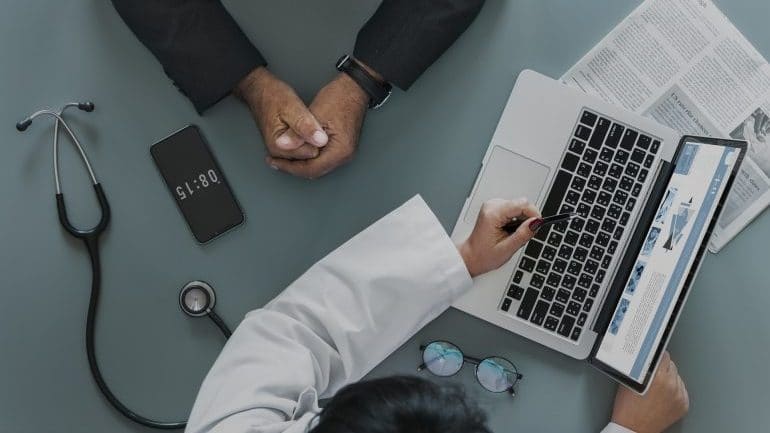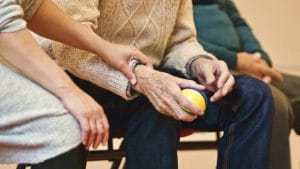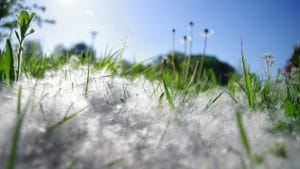31 Important Sleep Apnea Statistics You Should Know in 2024
written by / January 8, 2022
Sleep apnea causes short pauses in one’s breathing while they’re asleep. Nowadays, it’s become known as one of the most prevalent sleep disorders. However, it still doesn’t get all the attention it deserves. That’s why we compiled these surprising sleep apnea statistics to raise awareness about its serious consequences.
By recognizing and treating sleep apnea, we could lower the risk of cardiovascular diseases, reduce US economic expenses by at least $65 billion, and help save the 980 lives that are lost annually in car accidents involving drivers who suffer from this kind of sleep condition.
Read on to find out more!
Sleep Apnea Statistics Worldwide and in the US
- About 22 million Americans have sleep apnea.
- African Americans are more at risk of sleep apnea than Caucasians.
- 1 in 4 middle-aged men has OSA (Obstructive Sleep Apnea).
- 26% of people aged between 30 and 70 suffer from sleep apnea.
- At least 2–3% of children suffer from sleep apnea.
- 1 in 4 people with moderate sleep apnea won’t even experience daytime sleepiness, one of many interesting facts about sleep apnea.
- People with sleep apnea are four times more likely to have a stroke.
- Over 38,000 people die from cardiovascular problems caused by sleep apnea every year.
- The total annual economic cost of sleep apnea in the US is between $65 and $165 billion.
- 80% of people with moderate and severe OSA go undiagnosed.
How Many People Have Sleep Apnea?

You may be surprised by how prevalent sleep apnea is throughout the United States and even the world.
1. About 22 million Americans have sleep apnea.
(American Sleep Apnea Association)
As sleep apnea statistics in the USA suggest, this sleep disorder has become one of the major health problems. Besides poor sleep, it can lead to a series of medical conditions. So if you experience any symptoms of sleep apnea, talk to your doctor, since it’s of tremendous importance to diagnose it correctly and get the right treatment. In this intriguing infographic, you’ll see that even some famous people suffer from this sleep disorder.
2. Around 20% of adults experience at least mild sleep apnea symptoms.
(NCBI)
In addition, 1 in 15 people suffers from moderate to severe symptoms of this sleep disorder.
3. African Americans are more at risk of sleep apnea than Caucasians.
(Sleep Disorders Guide)
OSA is a type of sleep apnea in which your throat muscles relax so much during sleep that they block the airway. In a sleep study conducted by the University of California, obstructive sleep apnea statistics showed that 17% of African Americans had OSA, compared to 8% of Caucasians.
4. According to a sleep study, only 0.9% of US adults have central sleep apnea.
(NCBI)
Central sleep apnea is characterized by interrupted breathing during sleep because your muscles don’t receive the right signals from your brain. This is a much less common type of sleep apnea. Conversely, OSA comprises the greater prevalence of sleep apnea in the United States.
5. 1 in 4 middle-aged men has OSA (Obstructive Sleep Apnea).
(ResMed)
Both men and women suffer from this sleep disorder. However, according to this piece of data, men are at higher risk of experiencing symptoms, while only about 9% of middle-aged women have OSA.
Sleep Apnea Prevalence by Age
In this section, we’ll be looking at how sleep apnea affects different age groups and the reasons for this.
6. 26% of people aged between 30 and 70 suffer from sleep apnea.
(American Academy of Sleep Medicine)
As you can see, this sleep disorder is highly common among the adult population. But who is most likely to suffer from sleep apnea? According to statistics, men aged 40 or older have the highest risk of developing this chronic disease.
7. 10–20% of children who snore have sleep apnea.
(National Sleep Foundation)
There’s no need to worry if your kid snores from time to time since this isn’t the only symptom of OSA. However, if they also snort, cough, or mouth-breathe while asleep, it’s a good idea to see a doctor. Adequate, timely treatment can prevent serious health complications related to this sleep disorder.
8. At least 2–3% of children suffer from sleep apnea.
(National Sleep Foundation, American Sleep Apnea Association)
This is a rough estimate since there’s a number of different techniques for monitoring sleep apnea symptoms in kids. Some data indicate that there are 1% to 4% of children suffering from sleep apnea. It’s also interesting that this sleep disorder is particularly common among kids aged two to eight, as childhood sleep apnea statistics show.
Compared to adult sleep apnea, pediatric OSA differs in both the symptoms and causes. For example, some of the symptoms include learning and behavioral problems, while enlarged adenoids or tonsils are the most common cause.
9. The prevalence of sleep apnea increases with age.
(National Center for Biotechnology Information)
According to a sleep study, 10% of men and 3% of women aged 30–49 had sleep apnea, while 17% of men and 9% of women aged 50–70 had this sleep disorder. Considering this data, it’s evident that the risk of having sleep apnea increases as we get older.
Basic Sleep Apnea Facts
If you’re only just learning about sleep apnea or have just been diagnosed, this section will focus on facts you should know.
10. The pauses in breathing caused by sleep apnea can occur 30 times or more per hour.
(MedlinePlus)
Each pause may last from a few seconds to a few minutes. When you stop breathing in your sleep, your brain signals you to wake up in order to resume breathing. This pattern may repeat dozens of times during sleep without you even noticing that you’re constantly waking up and falling asleep. It’s no wonder that people with this sleep disorder feel drowsy during the day. So how many apneas per hour is normal? Having more than five apneas per hour is grounds for a possible diagnosis.
11. 1 in 4 people with moderate sleep apnea won’t even experience daytime sleepiness.
(NCBI)
Although daytime sleepiness is a very common symptom of sleep apnea, about 25% of people with this sleep disorder don’t show it. This is probably one of the reasons why so many cases of sleep apnea go unnoticed, and thus untreated.
Consequences of Sleep Apnea

What problems can be caused by sleep apnea? Here, we’ll be looking at what can happen due to sleep apnea.
12. A person sleeping beside someone with sleep apnea can lose up to an hour of sleep per night.
(Sleep Disorders Guide)
People with undiagnosed sleep apnea are likely to disturb their partner’s rest because they regularly snort, gasp, and snore in their sleep. However, according to snoring statistics, not all people who snore have this sleep disorder. Also, while an anti-snoring device can help you reduce snoring, it usually isn’t an effective treatment for sleep apnea.
13. People with sleep apnea are 4 times more likely to have a stroke.
(I Need Better Sleep)
Considering that sleep apnea may lead to a number of serious medical conditions, it’s vital to treat it in time. Besides finding adequate treatment for sleep apnea, adopting healthy habits can additionally help you deal with this sleep disorder. Therefore, overweight patients should lose weight, while smokers should quit this unhealthy habit.
14. 43% of people suffering from mild sleep apnea also have hypertension.
(ResMed)
In addition, according to these sleep apnea stats, 69% of people with severe sleep apnea suffer from high blood pressure. This correlation indicates that we can improve blood pressure control by treating sleep apnea.
15. People with sleep apnea are 3 times more likely to die prematurely.
(American Sleep Apnea Association)
Many studies investigated the relationship between sleep apnea and death, and statistics indicate that this sleep disorder can increase the risk of death. This is related to the fact that people suffering from sleep apnea have a greater risk of a heart attack or stroke.
16. Over 38,000 people die from cardiovascular problems caused by sleep apnea every year.
(I Need Better Sleep)
We can easily prevent the whopping number of deaths related to sleep apnea by recognizing this sleep disorder in time and finding the right sleep apnea treatment.
17. People suffering from sleep apnea are 15 times more likely to be in a traffic accident.
(ResMed)
One of the most commonly known facts about sleep apnea is that people with this sleep disorder have a terribly poor quality of sleep. Consequently, this makes them drowsy during the day and unable to focus. Therefore, they’re more prone to work-related accidents and car accidents.
18. People with sleep apnea have a 6 times higher risk of dying in a car crash.
(Sleep Disorders Guide)
This is one of the more terrible sleep apnea stats. It derives from the fact that sleep apnea leads to sleepiness and a lack of concentration, affecting the ability to drive carefully.
Costs Related to Sleep Apnea
What are the direct and indirect costs related to this condition? Here, we will be looking at the financial consequences of sleep apnea.
19. The total annual economic cost of sleep apnea in the US is between $65 and $165 billion.
(The Price of Fatigue: The Surprising Economic Cost of Unmanaged Sleep Apnea)
This figure is much higher than the cost incurred by asthma and cardiovascular diseases, which amounts to $20–$80 billion.
20. Untreated OSA cases cost the US healthcare system about $3.4 billion a year.
(National Center for Biotechnology Information)
Therefore, it’s of great importance to recognize sleep apnea and get adequate treatment. Moreover, we should study the causes of sleep apnea and work on its prevention.
21. Before being diagnosed, people with sleep apnea incurred about $100,000 more in healthcare costs per year.
(ResMed)
As you can see from sleep apnea statistics collected in the US, identifying sleep apnea can have a myriad of benefits. Besides improving the health of people suffering from this chronic disease and preventing severe health complications, it can also greatly reduce medical expenses.
Sleep Apnea Causes
What are the contributing factors that can cause sleep apnea? In this section, we’ll be focusing on what can cause this sleep condition.
22. Losing weight by 10% reduces the severity of sleep apnea by 26%.
(National Center for Biotechnology Information)
It’s a well-known fact that obesity can lead to sleep apnea. In fact, excess weight is one of the most common causes of this sleep disorder. Because of this, patients are often advised to lose weight. In fact, in some extreme cases, bariatric surgery is also considered for treatment.
23. More than 60% of OSA cases are associated with obesity.
(BMJ Journals)
This piece of information from the obstructive sleep apnea stats confirms that obesity is one of the major causes of sleep apnea. Overweight people with a BMI (body mass index) of 25 or higher are more likely to have sleep apnea.
24. People with a large neck size are at greater risk of developing sleep apnea.
(National Sleep Foundation)
To be more precise, men who have a neck circumference of 17″ or more and women with a neck of 16″ or more are more likely to suffer from sleep apnea.
25. Drinking alcohol increases the risk of sleep apnea by 25%.
(National Center for Biotechnology Information)
As you can see, statistics on sleep apnea confirm that alcohol can cause this sleep disorder. In order to lower the risk of sleep apnea, we should consider reducing the amount of alcohol we consume.
26. Smoking increases the risk of sleep apnea by 3 times.
(Source: Mayo Clinic)
One of the reasons smoking may cause OSA is because nicotine relaxes the upper airway muscles. Logically, people who smoke more heavily are more likely to have sleep apnea than light smokers.
Sleep Apnea Diagnosis and Treatment

How do you know if you have sleep apnea and what do you do once you’ve been diagnosed? This section will be about the diagnosis and treatment of this condition.
27. 80% of people with moderate and severe OSA go undiagnosed.
(American Sleep Apnea Association)
It’s shocking that such a high number of cases aren’t diagnosed since this sleep disorder can cause numerous cardiovascular problems, as well as type 2 diabetes. Moreover, people suffering from sleep apnea are at greater risk of causing traffic accidents because of daytime sleepiness.
28. Only 8% of seniors with a high risk of sleep apnea did a sleep apnea test.
(Wiley Online Library)
Although it’s well known that people aged 65 or older are at greater risk of developing this sleep disorder, many of them are never tested for it. Therefore, they usually aren’t diagnosed with sleep apnea and don’t get the right treatment.
29. Every year, there are 980 lives lost due to traffic accidents associated with sleep apnea.
(ResMed)
This would also reduce the annual costs incurred by car accidents by $11.1 billion, according to relevant undiagnosed sleep apnea statistics.
30. Using a CPAP machine for 7 hours a night can reduce the risk of health complications related to sleep apnea.
(I Need Better Sleep)
The use of a CPAP (Continuous Positive Airway Pressure) machine is one of the most common treatments of sleep apnea. It provides patients with a constant airflow and thus prevents the airway from closing. This can also be an effective way to stop snoring, as well as taking other measures.
31. The use of a CPAP machine can lower the risk of participating in a traffic accident by 70%.
(American Academy of Sleep Medicine)
According to the sleep apnea facts and statistics found in this study, people with sleep apnea who use a CPAP machine for at least four hours a night significantly reduce the risk of taking part in a car accident. This indicates that CPAP therapy can effectively alleviate the symptoms of sleep apnea.
Conclusion
Feeling a bit tired during the day may seem insignificant. However, sleep apnea can cause much more severe medical complications than drowsiness, some of which are even life-threatening. What’s more, it can lead to a number of serious consequences on a larger scale. Untreated sleep apnea has a high economic impact and endangers public safety. Therefore, we hope that these sleep apnea statistics for 2022 will draw some attention to this growing health problem.








